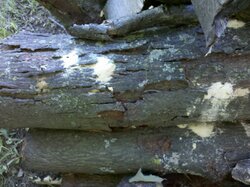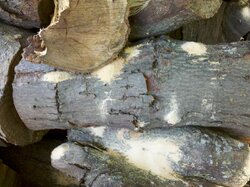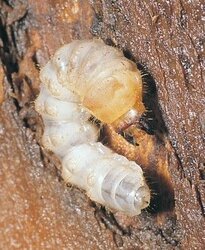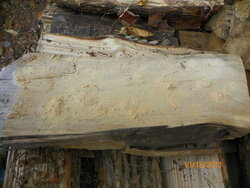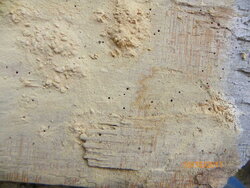What kinda bug is doing this to the wood ??
- Thread starter HDRock
- Start date
-
Active since 1995, Hearth.com is THE place on the internet for free information and advice about wood stoves, pellet stoves and other energy saving equipment.
We strive to provide opinions, articles, discussions and history related to Hearth Products and in a more general sense, energy issues.
We promote the EFFICIENT, RESPONSIBLE, CLEAN and SAFE use of all fuels, whether renewable or fossil.
You are using an out of date browser. It may not display this or other websites correctly.
You should upgrade or use an alternative browser.
You should upgrade or use an alternative browser.
- Status
- Not open for further replies.
Not sure what that is, maybe carpenter bees. I get that kinda stuff in my stacks too......don't even spend a second worrying about it though. I do try and let a good frost or two hit in the fall before bringing any bulk wood up onto my porch though, I like to freeze out any insects first, then load a cord on the back porch.
lumbering on
Feeling the Heat
wesessiah
Burning Hunk
Could be powderpost beetles. They are known to love hickory.
Applesister
Minister of Fire
Carpenter bees leave 3/8" holes. They prefer buildings. You can hear them chewing on the wood and actually see them pushing the "frass" out of the holes.
The downside to hickory is it's usually harboring some sort of protein, in some pupating state.
I have this theory that the bugs and snakes and mice and stuff are always there around us somewhere, we just dont see them. We dont generally see them.
The downside to hickory is it's usually harboring some sort of protein, in some pupating state.
I have this theory that the bugs and snakes and mice and stuff are always there around us somewhere, we just dont see them. We dont generally see them.
S
ScotO
Guest
Could be powderpost beetles, but those holes look too big.....I'm guessing it's either banded or painted hickory borers....
very common anymore, the hickory I got a few years back was LOADED with the painted borers. Look around your stacks for these....

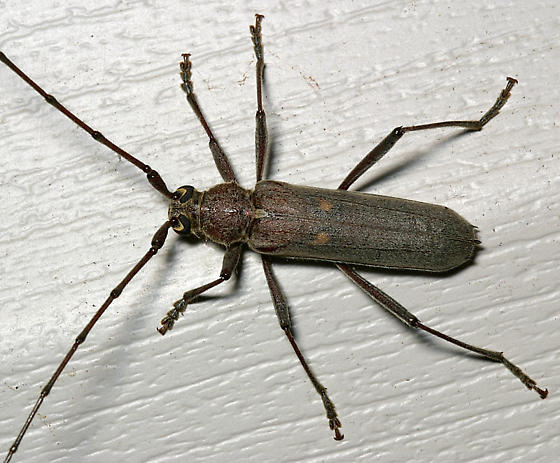
very common anymore, the hickory I got a few years back was LOADED with the painted borers. Look around your stacks for these....


MrWhoopee
Minister of Fire
Locust Post
Minister of Fire
Scotty hit it I would say. Picture on the left, of the hickory borer, is what I see around my hickory piles. I have had hickory the last 3 years and get the same thing.....have caught a glimpse of the little buggers a few times. They don't seem to like the shag bark as well as the pignut.
Could be powderpost beetles, but those holes look too big.....I'm guessing it's either banded or painted hickory borers....
very common anymore, the hickory I got a few years back was LOADED with the painted borers. Look around your stacks for these....


Must be the painted hickory borers, cuz I saw some of those at the site when I was cutting the tree up.
It just so happens, I have a shag bark Hickory tree just 15ft from where some of this Hickory is stacked, Will these buggers infest my live tree

fireview2788
Minister of Fire
Paulywalnut
Minister of Fire
OK I found this ,so I guess my living tree will be fine
The painted hickory borer has rows of horizontal yellow bands on the upper surfaces of the head and thorax. The first marking from front-to-back on the elytra is also a yellow horizontal band; however, the second marking appears as a distinct "W" that is light yellow to cream-colored. The remaining markings are yellow and appear as broken W-shaped bands. The beetles look very similar to LOCUST BORERS (M. robiniae); however, painted hickory borers emerge from cut wood in the spring and locust borers emerge from live trees in late summer to early fall.
Despite their common names, both beetles infest a wide range of hardwoods. Banded ash borers target ash, hickory, elm, and occasionally, white oak. Painted hickory borer infests hickory as well as ash, black locust, hackberry, honeylocust, oak, Osage orange, walnut, and butternut. Fortunately, painted hickory borers only infest dead wood that has been cut for less than one year and banded ash borers infest dying or recently dead trees. In fact, both beetles are considered forest products pests since they often target fresh-cut logs to be used for lumber or firewood. The beetles will not infest older dead wood; they will not infest wood that has been dried or processed into home furnishings, or used as structural wood. So, beetles that emerge from infested firewood in or around a home are only a nuisance pest.
The painted hickory borer has rows of horizontal yellow bands on the upper surfaces of the head and thorax. The first marking from front-to-back on the elytra is also a yellow horizontal band; however, the second marking appears as a distinct "W" that is light yellow to cream-colored. The remaining markings are yellow and appear as broken W-shaped bands. The beetles look very similar to LOCUST BORERS (M. robiniae); however, painted hickory borers emerge from cut wood in the spring and locust borers emerge from live trees in late summer to early fall.
Despite their common names, both beetles infest a wide range of hardwoods. Banded ash borers target ash, hickory, elm, and occasionally, white oak. Painted hickory borer infests hickory as well as ash, black locust, hackberry, honeylocust, oak, Osage orange, walnut, and butternut. Fortunately, painted hickory borers only infest dead wood that has been cut for less than one year and banded ash borers infest dying or recently dead trees. In fact, both beetles are considered forest products pests since they often target fresh-cut logs to be used for lumber or firewood. The beetles will not infest older dead wood; they will not infest wood that has been dried or processed into home furnishings, or used as structural wood. So, beetles that emerge from infested firewood in or around a home are only a nuisance pest.
S
ScotO
Guest
Those hickory borers look amazingly similar to maple borers and honey locust borers, as well.....had thousands of those honey locust borers after getting all that honey locust a few years back.
And funny thing about this post, I had to run to Carlisle, PA this afternoon to pick up my new gun cabinet and an audio/video component cabinet that I had custom made......got home from that trip and there was a dead painted borer in the bed of the truck.......what a coincidence...
And funny thing about this post, I had to run to Carlisle, PA this afternoon to pick up my new gun cabinet and an audio/video component cabinet that I had custom made......got home from that trip and there was a dead painted borer in the bed of the truck.......what a coincidence...
Ya that is a coincidenceThose hickory borers look amazingly similar to maple borers and honey locust borers, as well.....had thousands of those honey locust borers after getting all that honey locust a few years back.
And funny thing about this post, I had to run to Carlisle, PA this afternoon to pick up my new gun cabinet and an audio/video component cabinet that I had custom made......got home from that trip and there was a dead painted borer in the bed of the truck.......what a coincidence...

When I was cutting up my dead ash trees I saw a couple of similar beetles, that must have been Banded ash borers
So many things involved with burning wood , always learning new things

teutonicking
Feeling the Heat
OK I found this ,so I guess my living tree will be fine
The painted hickory borer has rows of horizontal yellow bands on the upper surfaces of the head and thorax. The first marking from front-to-back on the elytra is also a yellow horizontal band; however, the second marking appears as a distinct "W" that is light yellow to cream-colored. The remaining markings are yellow and appear as broken W-shaped bands. The beetles look very similar to LOCUST BORERS (M. robiniae); however, painted hickory borers emerge from cut wood in the spring and locust borers emerge from live trees in late summer to early fall.
Despite their common names, both beetles infest a wide range of hardwoods. Banded ash borers target ash, hickory, elm, and occasionally, white oak. Painted hickory borer infests hickory as well as ash, black locust, hackberry, honeylocust, oak, Osage orange, walnut, and butternut. Fortunately, painted hickory borers only infest dead wood that has been cut for less than one year and banded ash borers infest dying or recently dead trees. In fact, both beetles are considered forest products pests since they often target fresh-cut logs to be used for lumber or firewood. The beetles will not infest older dead wood; they will not infest wood that has been dried or processed into home furnishings, or used as structural wood. So, beetles that emerge from infested firewood in or around a home are only a nuisance pest.
Sounds like Backwoods Savage's stacks are safe from these!

I had them for years in some wood, may have been hickory or maybe maple. Every piece but they would not touch my oak in the same pile. I think there all gone now since all I have is oak. I don't know if you can get them into the house, I would never get the wood near the house until the wood was well frozen. Never into the house until it was going in the stove.
- Status
- Not open for further replies.


